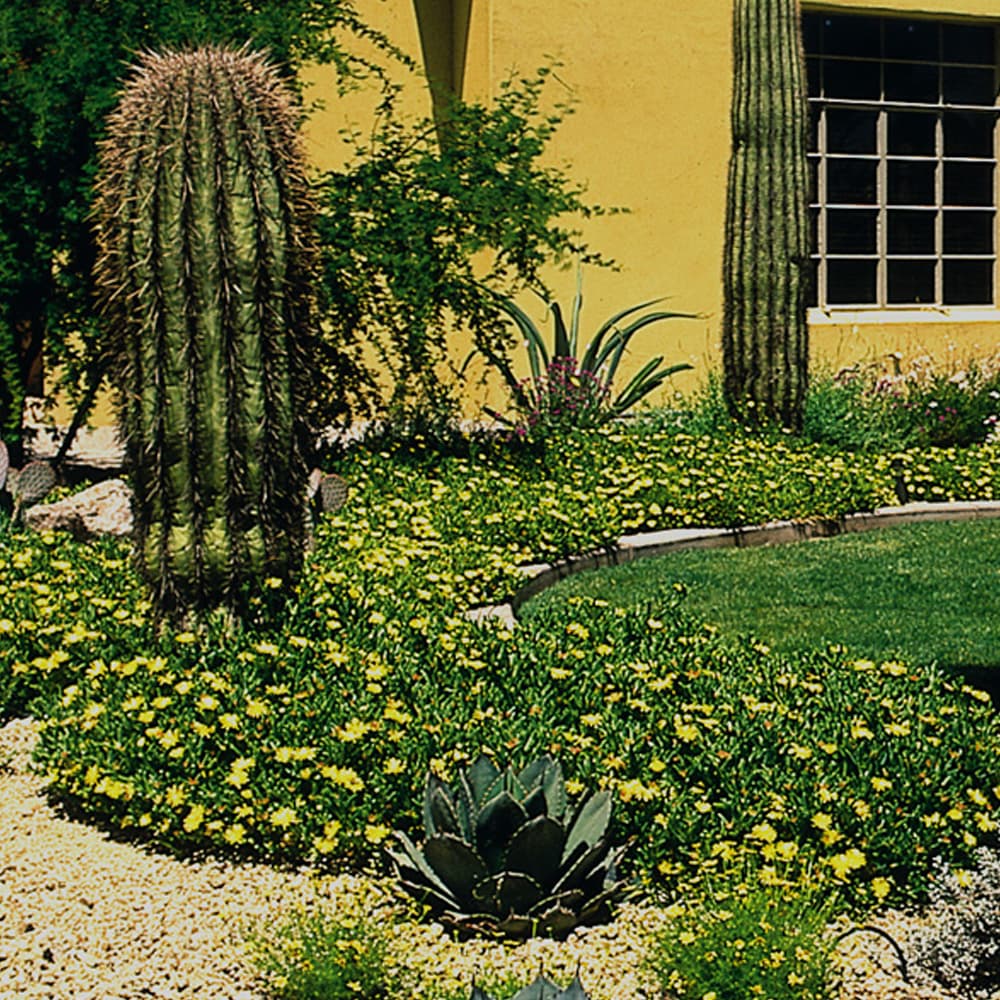AMWUA Blog
BY: Warren TenneyProper Prep for Overseeding Small Turf Areas

Fall has officially arrived and most of us are relieved to open the windows, turn down the air conditioner and venture outside to enjoy the fresh air. Most will also take a look at how their yards faired through the summer heat and create a to-do-list for the cooler weather.
First and foremost, especially with the recent rainfalls, now is the perfect time to make sure your irrigation system is reset for fall watering . By reducing your watering use in the cooler months, you will save water and of course money. In addition your desert-adapted plants need less water now that the temperature has declined.
Typically this time of year, is also when people look to overseed their summer bermudagrass for a winter lawn, at least the small sections that still exist. Desert-adapted landscapes have become more prominent across the Valley as homeowners continue to transform their turf yards. The City of Phoenix did research and found that 70 to 90 percent of the city’s homes had turf landscapes back in the 1980s. Today, that number has dropped to approximately 15 percent.
A small area of lawn watered appropriately is an acceptable part of a desert landscape. It cools the yard, offers a place for dogs and children to play, and it’s attractive. However, ensuring you take proper care of your turf area is important and timing is everything. If you start to overseed too soon, you could have large bare patches in your bermuda lawn next summer. Avoid these three common mistakes for a prettier, more even lawn while reducing the amount of work, money and water that is required.
Timing: When you begin to water winter seed, your bermudagrass growth should be slowing down. If it is still hot –in late September and early October– the heat and water will encourage bermuda to grow again, exhausting the food it should be storing for next spring. That means a starved and patchy lawn next summer. So don’t overseed until mid-October.
Scalping: There is a long-held belief that it is best to dethatch bermuda and then mow and “scalp” the lawn to nearly bare ground before seeding for the winter. This is a myth. Scalping can remove many of the bermudagrass crowns above ground that the root system feeds to resume growing properly in the spring. Once again, that can lead to large bare patches in a summer bermuda lawn.
Fertilizing: It is a waste of time and money to create a layer of manure when overseeding bermudagrass with winter seed. A light dusting of mulch can help to retain some moisture. Simply drag a grass rake over the winter seed to make sure it is in direct contact with the soil or use a reel mower to grind the seeds into the soil.
The University of Arizona Cooperative Extension has a short and clearly written set of instructions for overseeding bermudagrass with winter grass seed. Here are some of the basics.
Preparing: Stop fertilizing your bermudagrass 30 days before you plan to spread your winter grass seed. Two weeks before overseeding raise the height of your typical mowing blades by 30-40 percent and decrease watering by 30 percent.
Seeding: Stop watering two to three days before seeding. Lower the mowing height another 25-30 percent, remove the collection bag and leave the clippings as mulch for the winter seed. Use 12 to 15 pounds of winter grass seed for every 1,000 square feet of lawn.
Nurturing: Water three to four times a day just enough to keep the seeds moist. Don’t let the water pool or runoff the site. Overwatering can make seedlings prone to disease. Once you see the green haze of a new lawn cut water to once a day and then every other day. Slowly lessen the amount of water used on the new lawn over the next three to four weeks. Then you can use Arizona Meteorological Network Turf Reports for precise lawn watering instructions. Fertilize with ammonium phosphate two weeks after seedlings emerge and water the new lawn after applying the fertilizer. Mow when the grass is about three inches high.
While our conservation culture continues to grow, and more homeowners prefer a low-maintenance yard, turf areas will continue to decline as we adopt a more desert-adapted landscape style. However, if your yard still contains turf, remember grass is water-intensive, so keep it as a minimal component of your xeriscape design.
For 50 years, Arizona Municipal Water Users Association has worked to protect our member cities’ ability to provide assured, safe and sustainable water supplies to their communities. For more water information visit www.amwua.org .
Stay up to date & sign up for the AMWUA Blog:
Sign Up Now For Email Newsletters you can trust.
